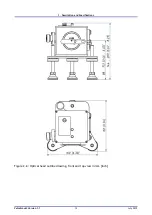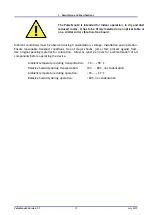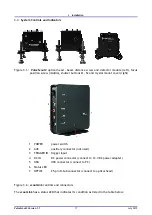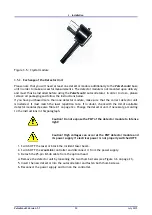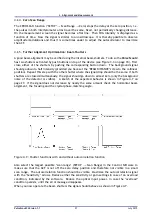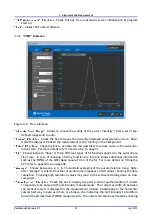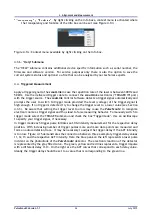
4.
Alignment and Measurement
matching), the focus position (see Figure 3.1 on page 17), the scan range ("SETUP"
→
Scan Range)
and the low pass lter ("VIEW"
→
Filter):
ˆ
First set the Scan Range to a value approximately 3 to 5 times higher than the ACF width and
make sure that the ACF drops to its minimum to the left and to the right of the maximum
intensity.
ˆ
Next turn the focus screw in or out to maximize the ACF intensity. Change the crystal angle
slightly to increase the intensity even more.
ˆ
Repeat the last two steps until no further improvement is possible.
ˆ
Finally, if the ACF signal is still noisy turn on the low pass lter ("VIEW"
→
Filter) to clear the
signal.
If after the steps described above no angle dependent ACF signal is found, check that there are no
other wavelengths (i.e. the second harmonic of the present beam) entering the autocorrelator by
inserting a long pass lter into the beam. More importantly, recheck the alignment (see Section
4.2.1 on page 23) and make sure there is a back refection at the cross hair. Also make sure that the
input polarization is horizontal, and that the laser is mode-locked. For more help and tips refer to
Section 6.1 Troubleshooting on page 43.
4.2.3.
Crystal Angle Tuning and Phase-matching
"Tuning" ("SETUP"
→
Tuning) refers to the process of adjusting the angle of the crystal with respect
to the laser beam. The aim is to achieve phase-matching and hence to generate the second har-
monic that is necessary for the detector to register a signal. If no autocorrelation signal is detected
(i.e. because the crystal has been exchanged or the wavelength changed) the phase-matching an-
gle must be readjusted manually.
In order to do this, use the arrow buttons in the SETUP menu next to Tuning . Maximize the
autocorrelation signal by tuning left or right.
It is very important to only conduct measurements when the crystal is in the 0th order phase-
matching angle.
So that you can be sure that this is the case tune the crystal away from the point where the
detector records the maximum intensity and observe the display. If none or smaller maxima appear
on the display the previous crystal tune setting, which showed the highest intensity maximum,
corresponds to the 0th order phase-matching angle.
Figure 4.6.: Example ACF intensity behavior as a function of crystal angle. The highest intensity
(0th order) occurs at 0 degrees deviation from the ideal phase-matching angle.
Pulse
Scout2 Version 1.1
26
July 2015


